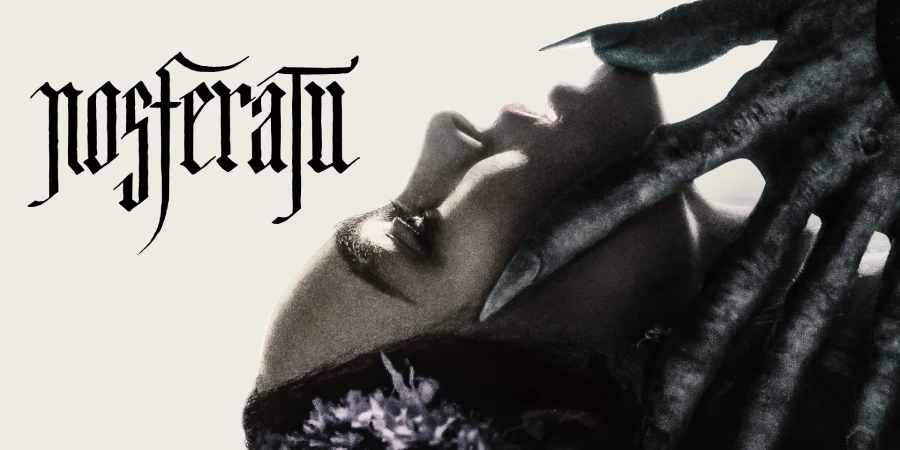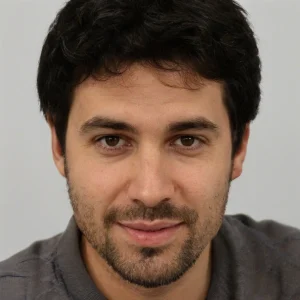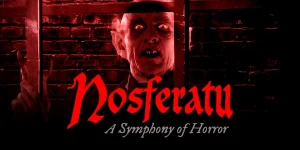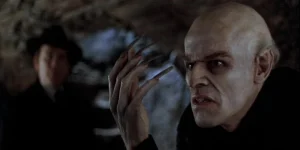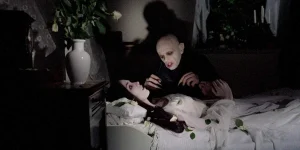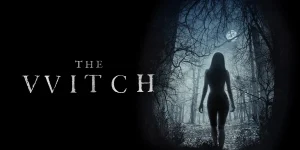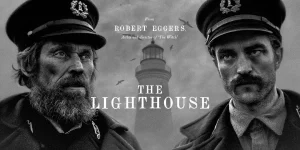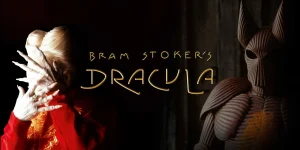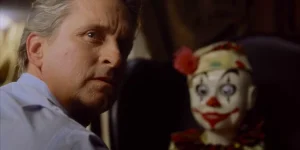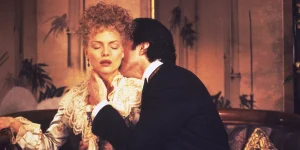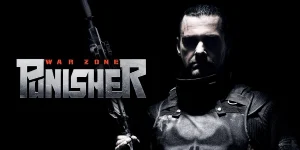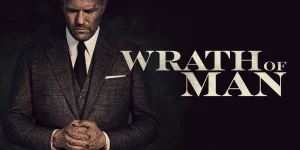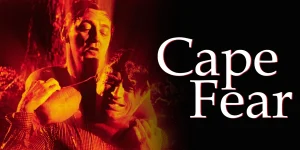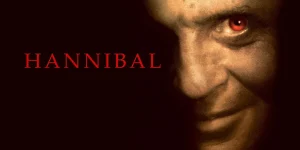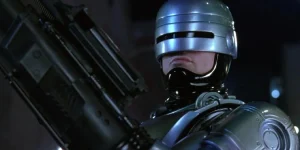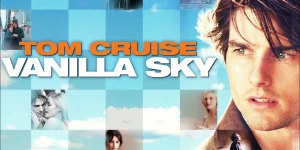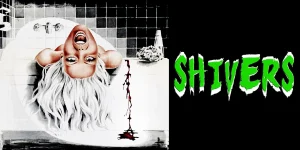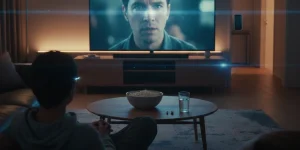Nosferatu (2024), directed by Robert Eggers, is a haunting and atmospheric reimagining of the 1922 silent horror classic by F.W. Murnau. Staying true to his signature style seen in The Witch and The Lighthouse, Eggers infuses this film with gothic dread, unnerving detail, and a chilling sense of inevitability.
Table of Contents
ToggleDetailed Summary
A Familiar Darkness Reawakens
Set in 19th-century Germany, the story follows Ellen Hutter (Lily-Rose Depp), a melancholic but strong-willed young woman, and her husband Thomas Hutter (Nicholas Hoult), a real estate agent sent to finalize a property deal with a mysterious count living in a remote castle in Transylvania.
As Thomas journeys through desolate villages and shadowed mountain passes, he hears fearful whispers about the client—Count Orlok (Bill Skarsgård), a being rumored to be something far from human.
Arrival at the Castle
Thomas arrives at Orlok’s decrepit, eerie castle, where the count reveals his unsettling nature. Eggers uses minimal light and vintage techniques to emphasize Orlok’s inhuman stillness and silent menace. Skarsgård’s portrayal is bone-chilling—more feral creature than man.
Thomas begins to suffer from hallucinations and physical decline, soon realizing he is a prisoner in the castle. Meanwhile, Orlok, intrigued by Ellen after seeing her picture, prepares to travel to her town via ship.
The Plague Comes to Town
As Orlok travels by sea, the crew begins to die one by one. By the time the ship reaches Ellen’s coastal village of Wisborg, it’s a floating coffin. The plague spreads rapidly, with townspeople blaming disease, unaware that something much older and darker is at work.
Ellen begins experiencing terrifying visions and nightmares. She is drawn to Orlok, who has taken residence in the abandoned estate across from her home. A spiritual connection begins forming between them—half psychic, half parasitic.
A Descent into Madness
Thomas returns home weakened and rambling about a vampire. Ellen, slowly realizing the truth, starts to uncover ancient lore about defeating such creatures. Her growing connection to Orlok becomes increasingly disturbing; she is simultaneously repulsed and fascinated.
Eggers crafts scenes dripping in dread—quiet shots of rats filling the streets, Orlok watching from windows, and a decaying town falling into hopelessness.
Movie Ending
The climax takes place on a stormy night. Ellen lures Orlok to her home, offering herself willingly in a last-ditch effort to destroy him. As he feeds on her, she resists death just long enough to keep him feeding past sunrise.
The sun rises slowly, casting a pale light over Ellen’s bed. Orlok, mesmerized by her blood and distracted by their intense spiritual connection, doesn’t realize the danger. As the first light touches him, he begins to burn—horribly, slowly. His form crumbles into ash, leaving nothing behind.
Ellen dies shortly after, but her sacrifice saves the town. Thomas, too late to stop it, weeps by her side.
The final scene shows the town recovering, but a quiet unease lingers. In the last shot, a child finds one of Orlok’s rings in the rubble, hinting that the darkness may not be entirely gone.
Are There Post-Credits Scenes?
No, Nosferatu (2024) does not include any post-credits scenes. The story ends definitively with Ellen’s sacrifice and Orlok’s destruction. The absence of a stinger feels intentional, preserving the film’s somber, classical tone.
Type of Movie
Nosferatu is a gothic horror film with elements of psychological thriller, supernatural romance, and historical fantasy. It’s slow-burn horror that emphasizes atmosphere, dread, and the horror of inevitability rather than jump scares or gore.
Cast
- Bill Skarsgård as Count Orlok
- Lily-Rose Depp as Ellen Hutter
- Nicholas Hoult as Thomas Hutter
- Willem Dafoe as Professor Albin Eberhart
- Aaron Taylor-Johnson as Friedrich Harding
- Emma Corrin as Anna Harding
- Ralph Ineson as the Ship’s Captain
- Simon McBurney as Mayor Müller
Film Music and Composer
The score was composed by Robin Carolan, who also worked on The Northman with Eggers. It’s filled with unsettling drones, classical string pieces, and eerie ambient tones, designed to heighten the tension and dread. The music channels early silent film orchestration but twisted into a more sinister modern composition.
Filming Locations
- Prague, Czech Republic: The old European architecture of Prague doubled for 19th-century Wisborg.
- Transylvanian countryside (Romania): Used for castle exteriors and remote mountain shots.
- Germany: Select interiors were filmed in preserved Gothic structures to lend authenticity.
The choice of authentic European locations significantly contributes to the movie’s immersive, period-accurate feel. Eggers reportedly insisted on as much in-camera location work as possible to avoid over-reliance on CGI.
Awards and Nominations
While the awards season is still ongoing, Nosferatu (2024) has already received critical acclaim for:
- Best Cinematography nominations (expected)
- Best Makeup and Hairstyling (for Orlok’s monstrous transformation)
- Potential Best Actress buzz for Lily-Rose Depp’s haunting performance
Expect nominations at the Academy Awards and major critic circles, especially in technical and acting categories.
Behind the Scenes Insights
- Bill Skarsgård reportedly stayed in character on set, often avoiding the rest of the cast to preserve the tension.
- Robert Eggers used many silent film techniques, including lens filters and vintage camera rigs, to mimic the feel of early cinema.
- The crew used over 500 live rats for one scene in the town square.
- Willem Dafoe, who previously played a fictional Nosferatu actor in Shadow of the Vampire, returns here in a different role, creating a meta connection.
- Lily-Rose Depp performed most of her own stunts, including sequences involving water immersion and night shoots in cold European climates.
Inspirations and References
- Original 1922 Nosferatu: The film is a direct remake in spirit and narrative, with modern character depth and aesthetic.
- Bram Stoker’s Dracula: While Nosferatu was an unauthorized adaptation of Dracula, Eggers re-infuses some of the original themes from Stoker’s work.
- German expressionism: The film heavily borrows from the angular shadows, symbolic use of light, and theatrical blocking of early horror cinema.
Alternate Endings and Deleted Scenes
- An alternate ending was filmed where Orlok disappears mysteriously instead of turning to ash, leaving his fate ambiguous. It was cut for being too open-ended.
- A deleted dream sequence involving Ellen and a shadow version of Orlok was reportedly removed due to pacing concerns.
- There was an extended ship voyage scene, delving deeper into the captain’s descent into madness, which Eggers may include in a future director’s cut.
Book Adaptations and Differences
Though not officially based on a book, Nosferatu is essentially a retelling of Bram Stoker’s Dracula. In Eggers’ version:
- The vampire is more of a tragic, cosmic force than a romantic antihero.
- Ellen’s agency is more emphasized; she’s less a damsel, more a self-aware martyr.
- The plague is portrayed more viscerally, symbolizing societal rot and fear.
Memorable Scenes and Quotes
Key Scenes
- Thomas discovering the crypt beneath the castle, filled with blood-drained corpses.
- Ellen’s dream in which she floats above Wisborg while Orlok calls her silently.
- The ship’s arrival in harbor with a single surviving rat-covered crate.
- Ellen’s sacrifice—both tender and terrifying.
Iconic Quotes
- “You think death is the end, but for me, it is the beginning.” – Count Orlok
- “He watches from the dark like a sickness waiting for breath.” – Ellen
- “There is no plague. There is only him.” – Professor Eberhart
Easter Eggs and Hidden Details
- The name “Orlok” appears in ancient texts Ellen reads, suggesting he’s a recurring historical evil.
- Shadows behave unnaturally in multiple scenes—a nod to the original film’s use of shadow puppetry.
- The number 22 appears repeatedly, referencing the original film’s release year (1922).
- In one brief shot, Orlok appears on the rooftop behind Ellen’s house—visible only if you brighten the frame.
Trivia
- The script was written years before The Northman but delayed due to budget and casting issues.
- Eggers wanted Anya Taylor-Joy as Ellen but scheduling conflicts prevented it.
- The castle interiors were built practically—no green screen used inside.
- Skarsgård’s makeup took over 4 hours daily to apply.
- The film had its world premiere at a gothic cathedral during a special midnight screening.
Why Watch?
If you’re a fan of atmospheric horror, gothic storytelling, or classic cinema reimagined with precision and dread, Nosferatu (2024) is unmissable. It’s not a jump-scare fest—it’s a slow, mesmerizing descent into darkness. It explores the cost of desire, the weight of sacrifice, and the horror that lurks in silence and shadows.

